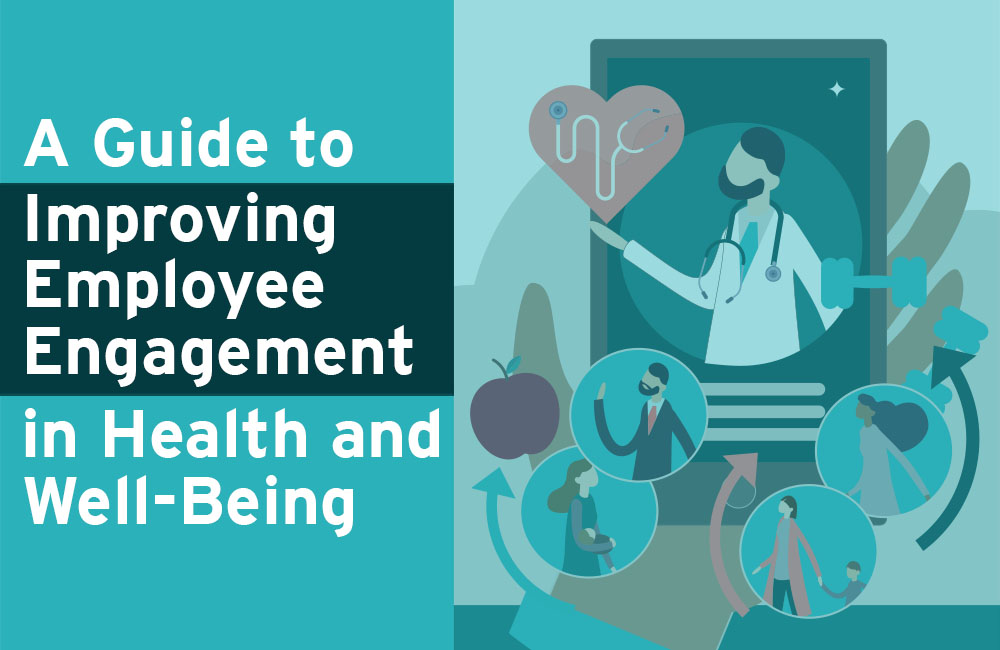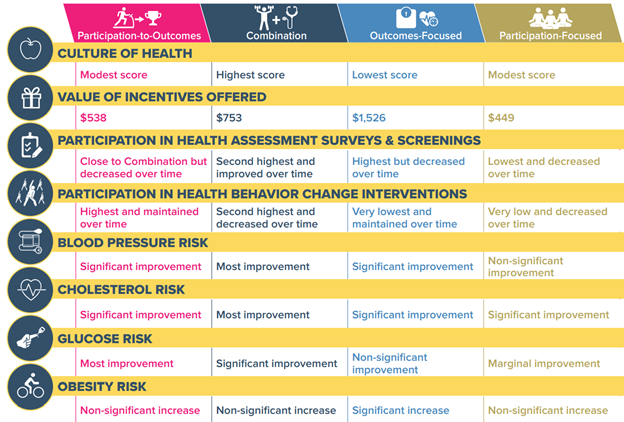
A Guide to Improving Employee Engagement in Their Health and Well-Being
Improving employee engagement in their health and well-being is one of the most important elements to employer health benefits. Why? You can make all the cutting-edge tools and programs on the market available to your staff, but if they don’t use them, it’s all for nothing.
That’s why The Alliance recruited workplace well-being expert Dr. Jessica Grossmeier to discuss how employers can better engage their employees in their health care using her 20+ years of research on best practices around employee participation in health programs.
[This is a blog recap of a virtual event by The Alliance. You can view the full recording here.]
Dr. Grossmeier began her presentation by explaining the pandemic’s focus on workplace well-being.
“There is an increased interest in mental and emotional well-being within the workplace, as well as increased concern about workplace health and safety. The pandemic has created life-altering circumstances for everybody,” she said.
“Knowledge-based workers are experiencing an increase in isolation, depression, and loneliness, while folks that report to work are experiencing an increase in anxiety about basic safety needs.”
She then shared surveys statistics about how much employers are paying attention to their employees’ needs. This Wellable study found:
- 88% are investing in more mental health solutions
- 81% are investing in stress management solutions
- 87% are investing in telemedicine solutions
However, as Dr. Grossmeier explained, there’s a gap between what employers offer and what employees need. Only about 50% of employees surveyed felt their employer supported their mental and emotional well-being.
Additionally, while more than 4 out of 5 employers offer various well-being programs, less than one third of employees report using them.
So how can employers bridge this disconnect? The answer is improving employee engagement.
What is Employee Engagement?
But first, let’s define employee engagement.
Dr. Grossmeier referenced the Health Enhancement Research Organization (HERO), a committee formed by more than 60 organizations to define and measure employee engagement. They reviewed 222 published research articles on the topic and created a simple definition:
Employee engagement is “a personal commitment to optimize one’s health and well-being,” Dr. Grossmeier explained. “It’s deeper than enrollment or simple participation.”
That deeper demonstration of commitment could be measured by distinguishing employees that complete, for example, all action items of an offering – rather than just one or two – or by measuring those who demonstrate increased knowledge, skills, or a behavior change after a program.
What Influences Employee Engagement?
Dr. Grossmeier continued explaining how the HERO committee came together with Population Health Alliance to examine another 60 articles on employee engagement to find six major influencers on employee engagement in health care:
- Health-related factors: When employees experience acute health symptoms, they are more likely to engage in the offerings made available to them by their employer, given they know about them and how to access them.
- Demographics: Although employers have little control over these – age, race, and gender can all influence how employees engage in certain health care programs.
- Organizational factors: Employers can influence employees’ engagement in their health by using specific leadership styles, establishing and building trust, and providing supervisory support for employees’ needs.
- Financial incentives: Incentivizing employees remains an effective way to improve their participation in health care programs.
- Environmental factors: Workplaces that provide adequate safety measures and promote social support between coworkers will influence their employees’ engagement in their health care.
- Communications: Employees need to be educated and reminded about their health benefits through several channels regularly.
A range of these measures is appropriate to increase engagement effectively. There is no one-size-fits-all answer to improving employee engagement, yet some methods are more effective than others.
Measuring The Effectiveness of Incentives
According to Dr. Grossmeier, 53% of organizations in the United States use incentives to encourage participation in health and well-being. “The larger the company, the higher the chance is that they offer incentives.”
She explained that incentives are highly effective for simple, one-and-done behaviors:
- Health Surveys
- Preventative Exams
- Flu Shots
- Biometric Screenings
And incentives are moderately effective for short-term improvements, like physical activity and reduced tobacco use.
“Generally, higher-dollar valued incentives are tied to higher participation rates, but these diminish over time,” she said. “There’s also very little research supporting the effect of incentives on long-term, sustained behavior change and health outcomes.”
Instead, Dr. Grossmeier suggests a multi-pronged approach. “Incentives strategies must be complemented by other strategies to promote population-level engagement.”
There are two ways to measure how employees receive their incentives. The first is through participation (sign-up, survey completion, enrollment, etc.), while the other is focused on outcomes (lower blood pressure, a healthy body mass index, weight loss, or other health improvements.)
How Employers Are Using Incentives
Dr. Grossmeier and her team divided more than 800 organizations into four different groups based on how they designed incentives, and found:
- 24% of employers started with participation-based incentives and switched to an outcomes-based design
- 17% of employers used a combination of both
- 44% of employers used outcome-based incentives only
- 16% of employers used participation-based incentives only

Then, they calculated the scores of each incentives strategy based on multiple factors:
- Culture of Health score
- Value of incentives offered
- Participation in HSA surveys and screenings
- Participation in health behavior change interventions.

While the Participation-Focused employers offered the lowest value of incentives on average and scored the lowest or near the bottom in all other categories, the Outcomes-Focused group had the highest value of incentives on average, which produced the highest participation rate – but it dwindled over time.
“Based on this study,” said Dr. Grossmeier, “The winning strategy is a combination-based design with a high culture of health score, and a modest level of incentive.”
In other words, a combination of participation and health-related objectives are associated with a higher participation rate and improved health outcomes over time.
Lastly, Dr. Grossmeier shared a few tips for ensuring your incentives don’t fall flat, explaining that financial incentives work best with:
- Senior leadership support
- Comprehensive communications strategies
- Written strategic plans
- Measurable, written objectives for well-being programs
Creating a “Culture of Health”
However, workplace culture also matters. Dr. Grossmeier showed a study of employers that offered a Health Risk Survey. Those with a strong workplace culture benefitted from a significantly improved participation rate than those without one, while using the same incentives.
She then moved to a study her team performed to predict four different well-being outcomes that employers care about:
- Employee Participation
- Health Impact at a population level
- Health Cost Impact at a population level
- Perceived Support by Employer
Her team used the HERO scorecard to survey 1,249 employers and see what they were doing to promote health and well-being. Based on those answers, they found the top 10 practices that drove the best results based on the four desired outcomes above:
95% – Support at least one health-related policy
80% – Engage employees in the health and well-being initiative in at least one way
79% – Have senior leaders who see the connection between well-being and business results
75% – Have leaders who support health and well-being initiatives in at least one way
68% – Have at least one group that regularly receives program performance data
66% – Have a formal, written strategic plan for health and well-being
64% – Communicate health values in at least one way
52% – Use and support employee champions or ambassadors to promote well-being.
49% – Support mid-level managers in their efforts to improve well-being of employees within their teams
46% – Use targeted communications for specific employee groups
All of these have to do with organizational leadership and support, proving that employee engagement really is a top-to-bottom initiative.
Applying Research to Improve Employee Engagement
Dr. Grossmeier then covered the ways employers can use this research to create a “culture of health” at their organization:
- Provide managers with training support resources for their well-being and to foster well-being for their teams
- Encourage leaders at all levels to role model self-care
- Incorporate movement moments into on-site and virtual meetings
- Incorporate mindful moments into on-site & virtual meetings
- Support flexible work schedules and prioritize short breaks
- Prioritize relationship-building and meaningful connections
- Get employee feedback on what feels supportive to their well-being
She also covered ways employers can adjust their programming for a hybrid workplace:
- Ensure robust offerings for both on-site and at-home workers
- Ensure digital solutions offer 1:1 and small group options
- Reduce barriers to participation
- Allow participants in video sessions to turn cameras off
- Offer a wellness reimbursement or allowance
- Ensure offerings are relevant to worker interests/needs
Lastly, Dr. Grossmeier shared some free tools employers can use to assess their approach to engaging employees in their health and best practices to implement at their workplace.
- HERO Health and Well-being Best Practices Scorecard
- CDC Worksite Health ScoreCard Manual
- 10 Strategies to Improve Employee Health and Well-being
Stay Up to Date!
Did you miss this event? Visit our Events page to subscribe to Events email reminders, view past events, and learn about future ones – like our Employer’s Guide to Avoiding Out-of-Network Charges webinar.
This jam-packed hour will cover how to protect yourself and your employees from an expensive, all-too-common issue. Learn more and register today.








